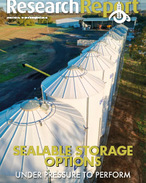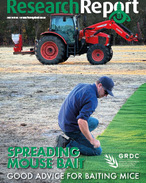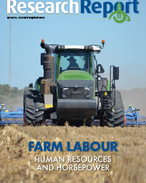This article is 4 years old. Images might not display.
Researchers from the Centre for Crop and Disease Management (CCDM), a co-investment by the Grains Research and Development Corporation (GRDC) and Curtin University, made the discovery in Millicent in South Australia, as part of their annual monitoring program.
As a result, researchers are now encouraging growers with any concerns about the effectiveness of Group 11 fungicides this season to send crop samples to the CCDM for resistance testing.
Dr Fran Lopez-Ruiz, leader of CCDM's fungicide resistance research group, said the discovery was an unexpected chance circumstance, as the diseased leaf sample came from a trial aimed at another pathogen.
"This monitoring program involves applying different fungicides to multiple trial sites across Australia's grain growing regions and testing diseased leaf samples for fungicide resistance," Dr Lopez-Ruiz said.
"Thanks to this program, we have picked up the mutation before growers have noticed fungicide failure in the paddock, which gives us a time advantage to stay on top of it.
"This is fortunate, because we know from global reports that when selection pressure is high, strobilurin resistance can spread very quickly."
Dr Lopez-Ruiz said multiple genetic tests had confirmed the presence of mutation G143A - a mutation associated with resistance to all Group 11 fungicides.
"However no other fungicide groups are affected by this mutation, so growers still have chemical alternatives they can use to control STB," he said.
Dr Lopez-Ruiz is now advising growers to adopt a resistance management strategy that includes the use of different modes of action (MoA) and avoids, if possible, the application of formulations containing Group 11 fungicides in their rotations.
CCDM director Professor Mark Gibberd said the timeliness of the discovery has highlighted the importance of disease monitoring across all grain growing regions.
Dr Andrew Milgate at NSW Department of Primary Industries (DPI) works closely with the STB pathogen, and said when choosing products to control STB growers should keep in mind not all demethylase inhibitor fungicides (DMI, Group 3) are completely effective anymore.
"Research by my team has revealed that STB has reduced sensitivity to older DMI chemistry such as tebuconazole and this is widespread in the STB population," Dr Milgate said.
Growers and agronomists who suspect reduced sensitivity or resistance to Group 11 fungicide should contact the CCDM's Fungicide Resistance Group at frg@curtin.edu.au.
Alternatively, contact a local regional plant pathologist or fungicide resistance expert to discuss the situation. A list of contacts is available at www.afren.com.au























